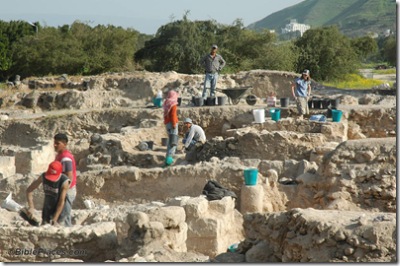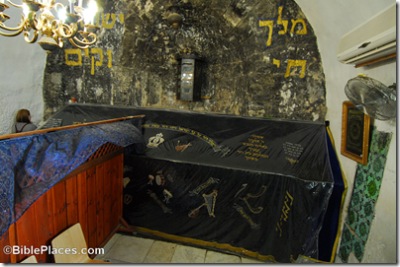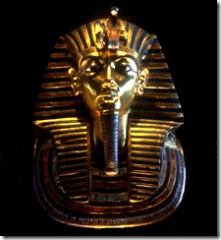In my opinion, one of the most interesting cities historically in Israel is Tiberias. It might surprise some then that all I ever do with students in Tiberias is buy them lunch. Until recently, there have not been significant ancient discoveries to visit. Current excavations should change this in the coming years, as the results of these projects are opened to the public. One such discovery was announced this week: a 4th or early 5th century church. This was the time period when Tiberias was a thriving center of Jewish learning, as the so-called “Jerusalem Talmud” was being written/codified in the city at this time. Discoveries like this could help us to better understand the relationship between Jews and Christians in the Byzantine/Talmudic period.
The church’s remains were discovered adjacent to ancient public buildings among them a basilica, bathhouse, streets and shops that were exposed at the site in the past. Dr. Moshe Hartal and Edna Amos, the directors of the excavation on behalf of the Antiquities Authority, stated that this is the most ancient church to be uncovered in Tiberias and the only one that has been found in the center of the city.
According to Dr. Hartal, from the year 427 CE the Church issued a decree prohibiting the placement of crosses in mosaic floors in order to prevent them from being stepped on. “The presence of so many crosses in the floors of the church that was exposed here thus confirms the church dates to the period prior to the ban,” he said.
In addition, the remains of a Jewish neighborhood that dates to the tenth-eleventh centuries were discovered in the excavations. These remains extend up to the foot of the cliff in the high part of the city, in an area that was probably residential in nature.
“The discovery of the remains of the church in the middle of the ancient city, like that of the Jewish neighborhood and the magnificent city that existed in Tiberias more than one thousand years ago, greatly contributes to our understanding of the town planning, its scope and it structures,” archaeologists on behalf of the Antiquities Authority said.
The story in the “Scoop” has more information, including a photograph and partial translation of an inscription in the mosaic floor.



